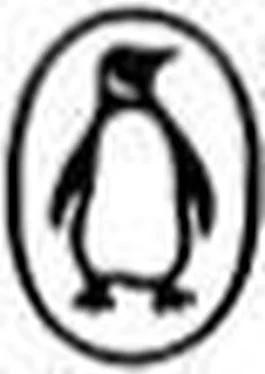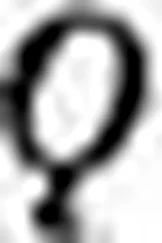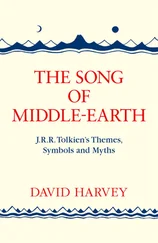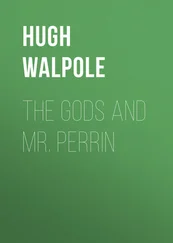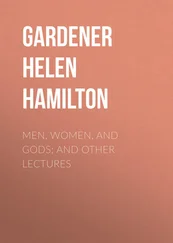Davidson, H. - Gods and Myths of Northern Europe
Здесь есть возможность читать онлайн «Davidson, H. - Gods and Myths of Northern Europe» весь текст электронной книги совершенно бесплатно (целиком полную версию без сокращений). В некоторых случаях можно слушать аудио, скачать через торрент в формате fb2 и присутствует краткое содержание. Жанр: Старинная литература, на английском языке. Описание произведения, (предисловие) а так же отзывы посетителей доступны на портале библиотеки ЛибКат.
- Название:Gods and Myths of Northern Europe
- Автор:
- Жанр:
- Год:неизвестен
- ISBN:нет данных
- Рейтинг книги:5 / 5. Голосов: 1
-
Избранное:Добавить в избранное
- Отзывы:
-
Ваша оценка:
- 100
- 1
- 2
- 3
- 4
- 5
Gods and Myths of Northern Europe: краткое содержание, описание и аннотация
Предлагаем к чтению аннотацию, описание, краткое содержание или предисловие (зависит от того, что написал сам автор книги «Gods and Myths of Northern Europe»). Если вы не нашли необходимую информацию о книге — напишите в комментариях, мы постараемся отыскать её.
Gods and Myths of Northern Europe — читать онлайн бесплатно полную книгу (весь текст) целиком
Ниже представлен текст книги, разбитый по страницам. Система сохранения места последней прочитанной страницы, позволяет с удобством читать онлайн бесплатно книгу «Gods and Myths of Northern Europe», без необходимости каждый раз заново искать на чём Вы остановились. Поставьте закладку, и сможете в любой момент перейти на страницу, на которой закончили чтение.
Интервал:
Закладка:
a cloud of blood moves over the sky,
the air is red with the blood of men,
as the battle-women chant their song.
This poem, known as the Darraðarljóð or ‘Spear-Lay’, may not necessarily have been composed about the Battle of Clontarf; it has been suggested that some other battle in Ireland originally inspired it. 1In any case we have here, at a relatively early date, a picture of Valkyries, ‘battle-women’, which is in accordance with the other descriptions of terrible female creatures working out the fate of warriors in battle, and bringing down blood and carnage upon men.
Other figures showing a close resemblance to Valkyries of this kind are found in stories of the Celtic peoples. Two ‘goddesses’, Morrigu and Bobd, are mentioned in the Irish sagas. They were wont to appear on the battlefield, or were sometimes visible before a battle. They could take on the form of birds of prey, and they were accustomed to utter prophecies of war and slaughter. The association of these battle-women with the birds of prey who flock to a battlefield is interesting. In the Old English poem Exodus the adjective ‘choosing the slain’, wœlceasig , is used of the raven, and one of the earliest Old Norse poems, Hrafnsmál , is in the form of a dialogue between a raven and a Valkyrie. The raven, together with the wolf, is mentioned in practically all the descriptions of a battle in Old English poetry, and both were regarded as the creatures of the war god, Odin.
Such striking resemblances between the figures of supernatural battle-women in the literature of the Scandinavians and heathen Germans on the one hand, and the Celtic peoples on the other, are significant. Donahue 2was led to suggest that there was a belief in fierce battle-spirits connected with the god of war at a time when the Celts and Germans were in close contact with one another, during the Roman period. There is little doubt that the figure of the Valkyrie has developed in Norse literature into something more dignified and less blood-thirsty as a result of the work of the poets over a considerable period. The alarming and terrible creatures who have survived in the literature in spite of this seem likely however to be closer in character to the choosers of the slain as they were visualized in heathen times.
4. The Berserks of Odin
The power which Odin was believed to possess over the minds of men at war was not limited to the sapping of their energy and will-power, the imposing of ‘fetters’ on them in the heat of battle. He could give more positive help, as we see from the phenomenon of the berserks. These were warriors so full of the ecstasy of battle as to be impervious to wounds and to danger, and according to Snorri they derived this power from Odin:
… his men went without mailcoats, and were frantic as dogs or wolves; they bit their shields and were as strong as bears or boars; they slew men, but neither fire nor iron could hurt them. This is known as ‘running berserk’.
Ynglinga Saga , 6
In the later saga-literature the berserk has turned into something which resembles a fairy-tale monster, with whom the hero does battle against overwhelming odds and whom he of course defeats. The main characteristics of the berserk nevertheless are worthy of note. First, he fights in a state of wild frenzy; secondly, he is marked out as a member of a special class free from the laws which govern ordinary members of society. These characteristics have been recorded among the Germanic peoples long before Viking times.
For instance, a class of dedicated warriors was known among the Chatti, the German tribe described by Tacitus in the first century. They wore iron rings round their necks, and could only discard these after they had killed an enemy. Some indeed chose to wear them all their life, as long as they could go on fighting, and ‘to such old warriors it always rests to begin the battle’. Tacitus continues:
They are always in the van, and present a startling sight; even in peace they decline to soften the savagery of their expression. None of them has home, land, or business of his own. To whatever host they choose to go, they get their keep from him, wasting the goods of others while despising their own, until old age drains their blood and incapacitates them for so exacting a form of heroism.
Germania , 31 (Mattingly’s translation)
Another aspect of the berserks is found among the warriors of the Harii, also described by Tacitus. Like the Chatti these were famed for their strength, and they cultivated the art of terrifying their enemies:
They black their shields and dye their bodies black, and choose pitch dark nights for their battles. The terrifying shadow of such a fiendish army inspires a mortal panic, for no enemy can stand so strange and devilish a sight.
Germania , 43
The Heruli also, a people who practised cremation and suttee, and who were worshippers of the war god, deliberately cultivated the practice of fighting without armour. Procopius tells us that their only protection was a shield and a cloak, and other writers confirm this.
At the time of Harald Fairhair, king of Norway in the ninth century, there were berserks in the king’s bodyguard. In the Hrafnsmál they are called wolf-coats, and are said to be men of tried valour who never flinched at battle. We are told in Heimskringla that they had a place on the king’s warship. Dumézil 1has suggested that the touching with a spear, the mark of consecration to Odin, may have been the initiation ceremony for members of this band, giving assurance of immortality in the service of the war god whom they worshipped and to whom their lives were dedicated. The berserks who roamed through Scandinavia were apparently viewed as sacred to the god. Dumézil sees them as a necessary element in society, representing the wild and fantastic in contrast with law and order.
The berserks in the stories are frequently said to be shape-changers, and sometimes to take on animal form. Bothvar Biarki , the celebrated champion of King Hrolf of Denmark, was said to fight in the form of a great bear in the ranks of the king’s army, while his human form lay at home and seemed asleep. The basis of such tales may lie in the fierce frenzy, like that of a wild beast, which overcame the berserks in battle. Such fits of rage could be inconvenient in private life, and this is illustrated by a story from the life of the famous poet, Egill Skallagrimsson. His father appears to have been a berserk in his youth, and when he had married and settled down in Iceland, he became over-excited one evening in a game of ball with his child. In a mad frenzy he killed the little boy’s nurse, and came very near to destroying his son Egill as well. In another saga a man who suffered from such attacks of berserk rage was said to be healed from them when he became a Christian. The idea of taking on animal shape while in such a rage may have been strengthened by the animal skins which according to tradition such companies of warriors wore. A modern parallel to this is offered by the societies of dreaded leopard-men in Africa.
Memories of initiation into warrior societies survive in the prose sagas. In Hrólf s Saga Kraka , a youth had to ‘kill’ the figure of a monster set up in the king’s hall, and to drink its blood. In Vǫlsunga Saga , Sigmund and his son, who were outlaws, put on wolf-skins and made a solemn pact to keep certain rules when they fought:
Sigmund and his son put on the skins, and were unable to take them off. The same nature went with them as before, and they spoke in wolf-language; each understood this speech. They stayed out in the wood and went each his own way. They made an agreement between them, that each should be prepared to take on as many as seven men, but no more. He who was outnumbered must call out in wolf-language. ‘We must not fail in this,’ said Sigmund, ‘for you are young and rash, and men will judge you to be a fine quarry.’
Читать дальшеИнтервал:
Закладка:
Похожие книги на «Gods and Myths of Northern Europe»
Представляем Вашему вниманию похожие книги на «Gods and Myths of Northern Europe» списком для выбора. Мы отобрали схожую по названию и смыслу литературу в надежде предоставить читателям больше вариантов отыскать новые, интересные, ещё непрочитанные произведения.
Обсуждение, отзывы о книге «Gods and Myths of Northern Europe» и просто собственные мнения читателей. Оставьте ваши комментарии, напишите, что Вы думаете о произведении, его смысле или главных героях. Укажите что конкретно понравилось, а что нет, и почему Вы так считаете.
